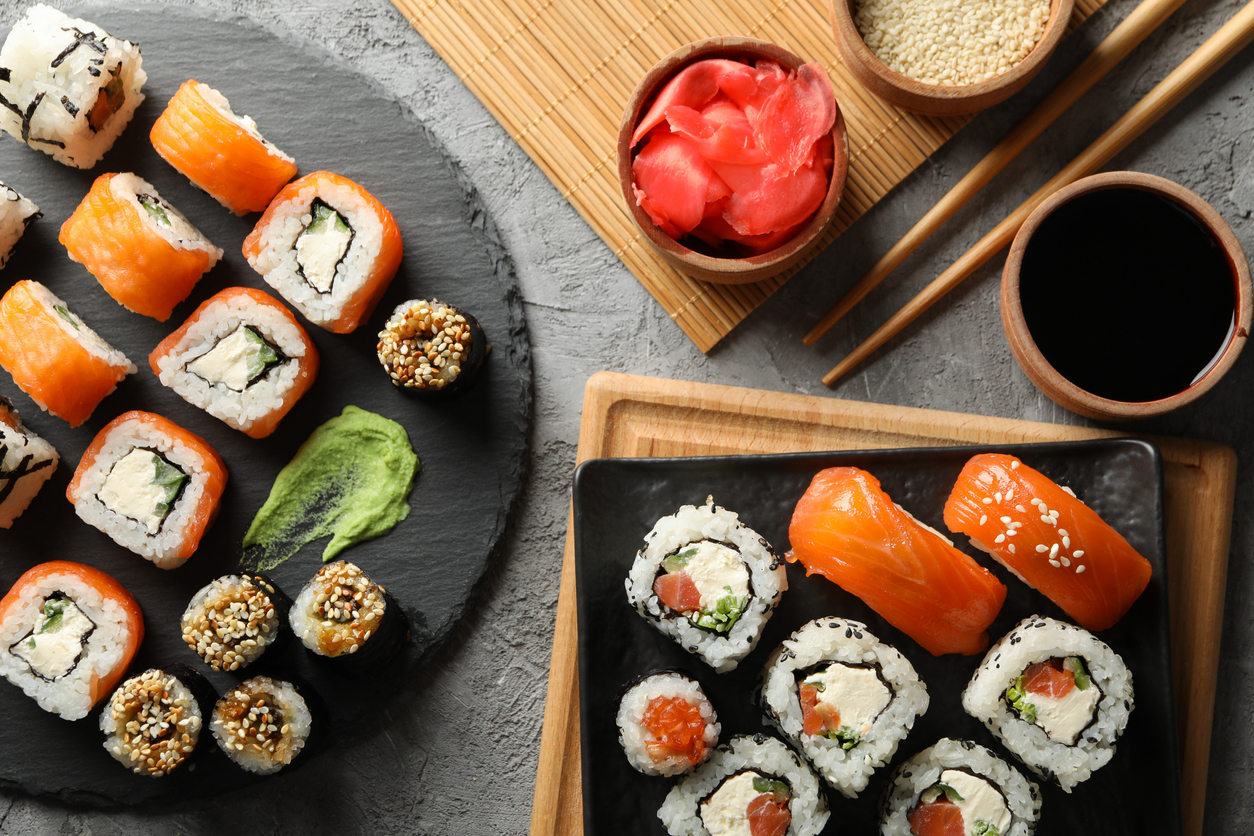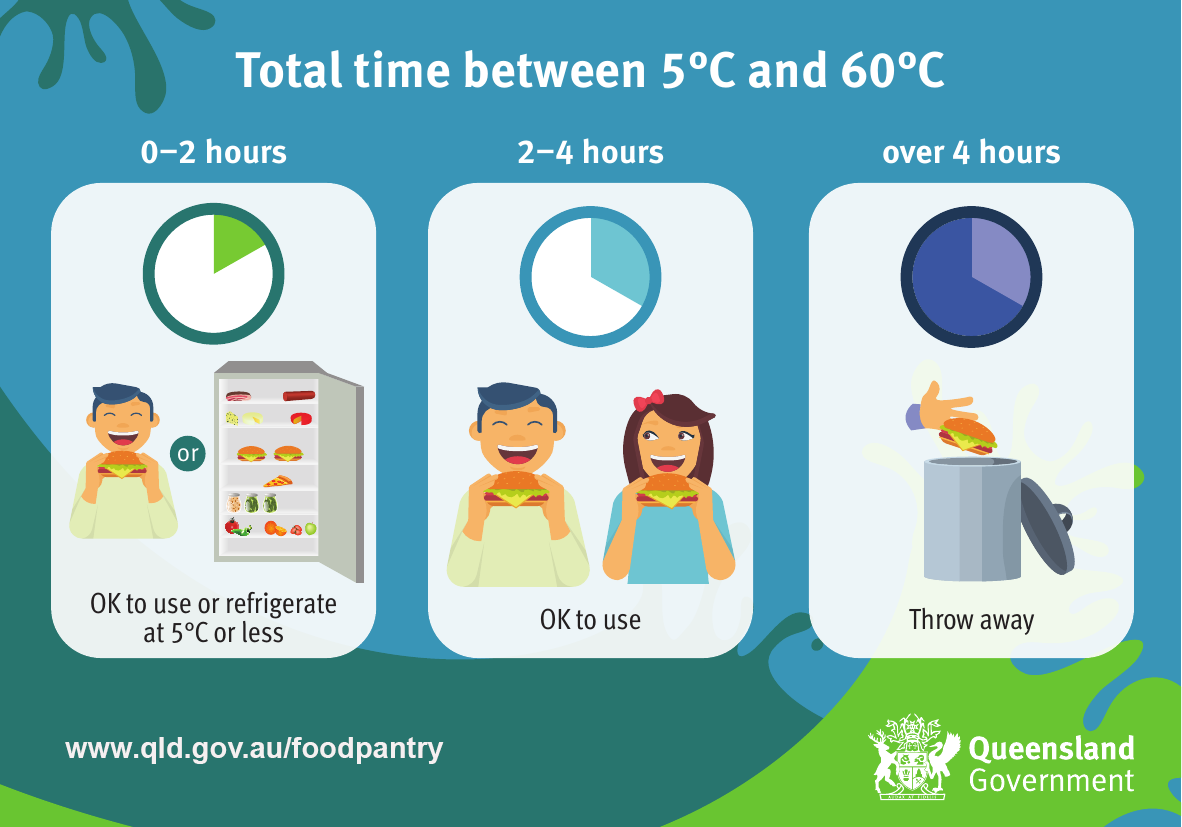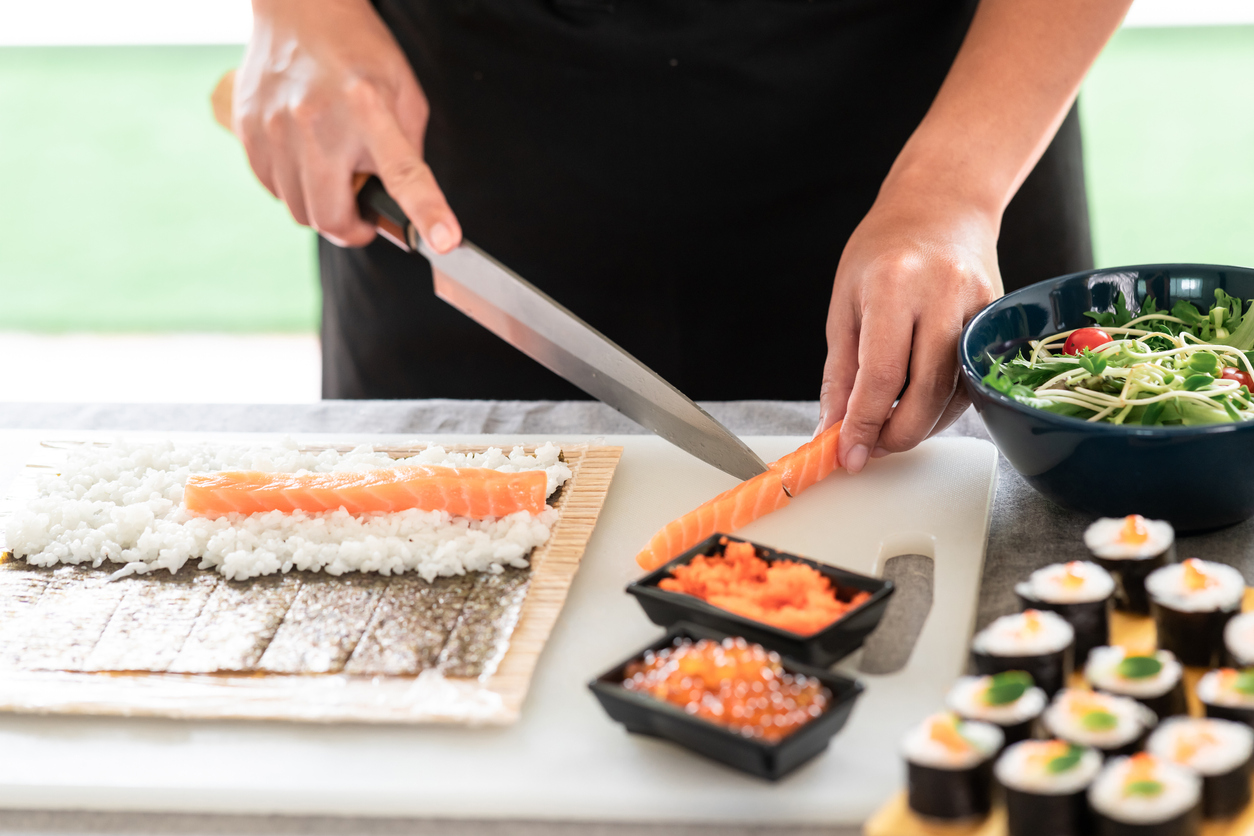Sushi
Sushi is a particular type of Japanese cuisine that combines vinegar seasoned rice with a variety of seafood, meats and vegetables. There are many different varieties of sushi arising from different fillings, toppings, condiments and presentation. Other names for sushi include nigiri, nigirizushi, nori rolls, Californian rolls, maki, makizushi, inari and inarizushi.

Risks
There are food safety concerns that are unique to the preparation and service of sushi. The rice is best used at room temperature which is a favourable temperature for pathogen growth. In addition, many people prefer to eat sushi at room temperature, which also makes refrigerated storage less desirable.
Raw fish is a common ingredient in sushi and may contain harmful bacteria and viruses. Sushi made with raw fish is often prepared alongside sushi prepared with cooked and vegetable ingredients which increases the risk of cross contamination of cooked products from raw ingredients.
Rice acidification
The addition of vinegar to rice produces an acidic environment discouraging the growth of food poisoning bacteria.
To prevent the growth of bacteria, the pH of the rice needs to be maintained at 4.6 or lower. pH levels higher than this provide a better environment for the bacteria to grow.
It is important that the pH of rice is tested regularly with a pH meter or strips. Results of these tests should be recorded in a pH log.
If the pH of the rice is too high, it is important to either decrease the pH if you are able to do so or discard the product if it has been above 5°C for more than 4 hours.
The acidity of the rice also assists in protecting the other ingredients in the sushi products from bacterial growth.
If using a pH meter, it must be calibrated regularly in accordance with the manufacturer's instructions.
Temperature control
Even with the acidified rice, sushi is still considered a potentially hazardous food. As such, it is important to ensure that all sushi is maintained under temperature or time control.
Ideally all sushi should be maintained at 5°C or below. If sushi is to be stored or displayed at temperatures between 5°C and 60°C a documented time control system should be in place to ensure the ‘4 hour/2 hour’ rule is being effectively applied. This rule states:
- any potentially hazardous food out of temperature control for:
- a total of less than 2 hours, must be refrigerated or used immediately
- a total of longer than 2 hours but less than 4 hours, must be used immediately
- a total of 4 hours or more must be discarded (thrown away).
Due to the acidification of rice, some sushi can be stored outside of temperature control above 5°C.

Food handling
It is important to ensure all other ingredients used in the making of sushi are clean and free from contamination and are handled as little as possible.
All utensils used must be clean and sanitised.
It is also important to ensure that raw fish is handled separately to ready-to-eat ingredients including cooked fish, chicken, egg and vegetables to minimise the risk of cross contamination.

Records for food businesses
Records that should be kept to show safe sushi include:
- pH of acidified rice
- temperature of stored rice and sushi
- temperature of displayed sushi
- time control system if used including
- time that sushi was placed on display
- if sushi is made and displayed immediately, the time it was made must be recorded and corresponding colour, pattern etc used to track different batches and times.


